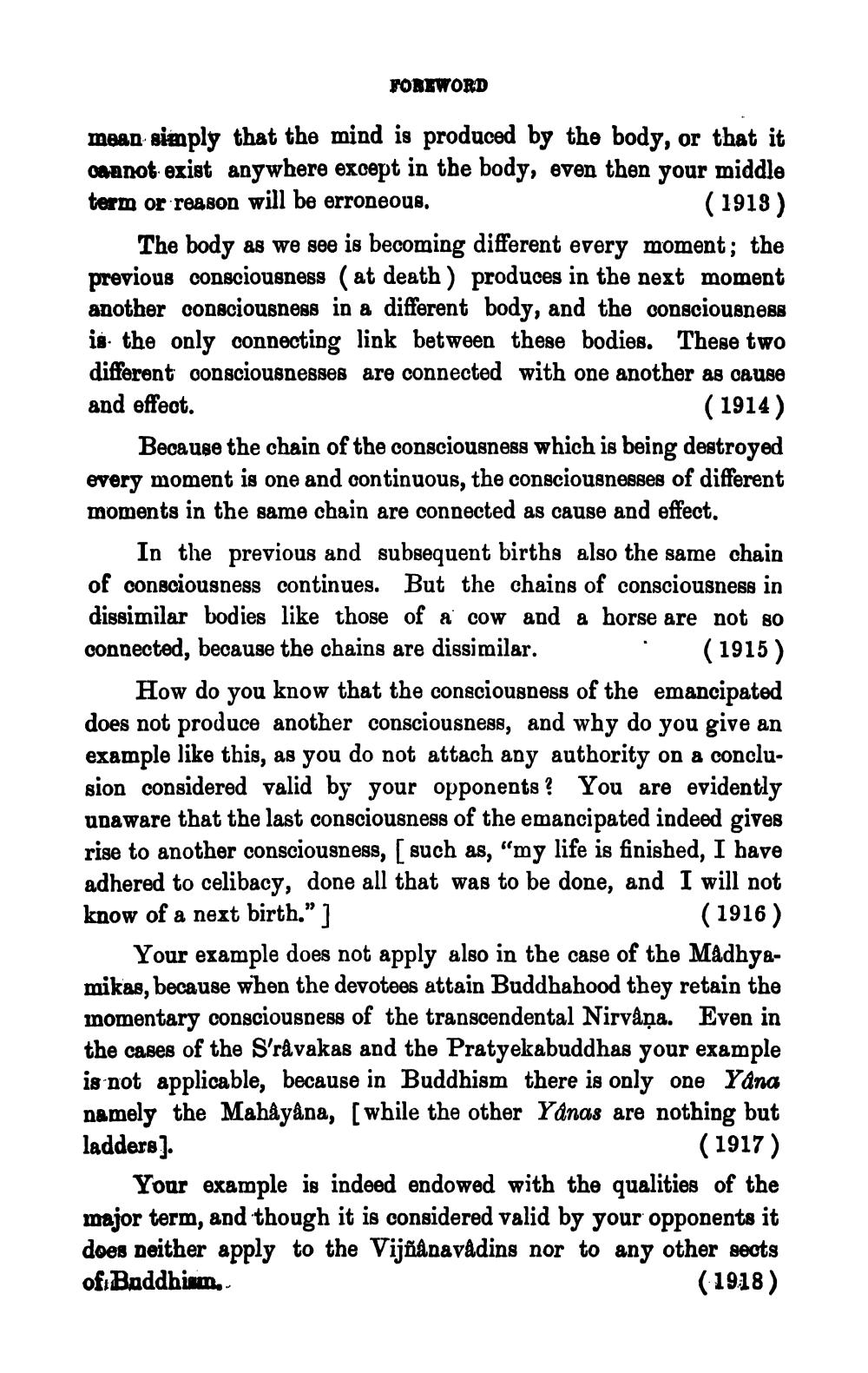________________
PORYWORD
maan simply that the mind is produced by the body, or that it ovanot exist anywhere except in the body, even then your middle term or reason will be erroneous.
(1918) The body as we see is becoming different every moment; the previous consciousness ( at death) produces in the next moment another consciousness in a different body, and the consciousness is the only connecting link between these bodies. These two different consciousnesses are connected with one another as cause and effect.
(1914) Because the chain of the consciousness which is being destroyed every moment is one and continuous, the consciousnesses of different moments in the same chain are connected as cause and effect.
In the previous and subsequent births also the same chain of consciousness continues. But the chains of consciousness in dissimilar bodies like those of a cow and a horse are not so connected, because the chains are dissimilar.
(1915) How do you know that the consciousness of the emancipated does not produce another consciousness, and why do you give an example like this, as you do not attach any authority on a conclusion considered valid by your opponents? You are evidently unaware that the last consciousness of the emancipated indeed gives rise to another consciousness, ( such as, “my life is finished, I have adhered to celibacy, done all that was to be done, and I will not know of a next birth." ]
(1916) Your example does not apply also in the case of the Madhyamikas, because when the devotees attain Buddhahood they retain the momentary consciousness of the transcendental Nirvåņa. Even in the cases of the S'råvakas and the Pratyekabuddhas your example is not applicable, because in Buddhism there is only one Yana namely the Mahâyâna, [while the other Yanas are nothing but ladders.].
(1917) Your example is indeed endowed with the qualities of the major term, and though it is considered valid by your opponents it doos neither apply to the Vijñânavadins nor to any other sects of Buddhism,
(1918)




